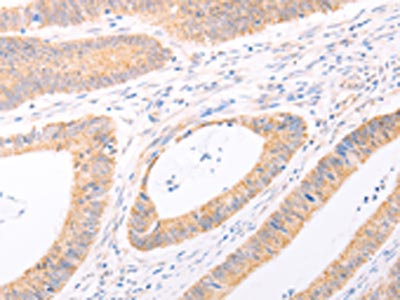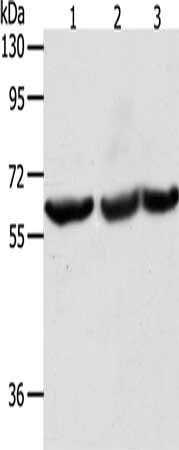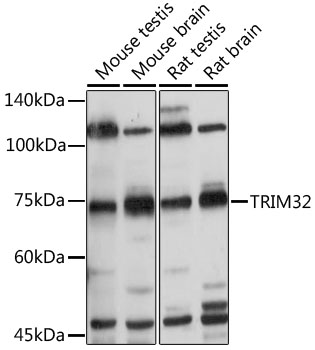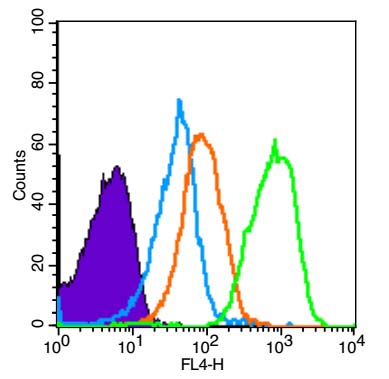
The image on the left is immunohistochemistry of paraffin-embedded Human cervical cancer tissue using CSB-PA565209(TRIM32 Antibody) at dilution 1/40, on the right is treated with fusion protein. (Original magnification: x200)
TRIM32 Antibody
CSB-PA565209
ApplicationsWestern Blot, ELISA, ImmunoHistoChemistry
Product group Antibodies
ReactivityHuman, Mouse
TargetTRIM32
Overview
- SupplierCusabio
- Product NameTRIM32 Antibody
- Delivery Days Customer20
- ApplicationsWestern Blot, ELISA, ImmunoHistoChemistry
- CertificationResearch Use Only
- ClonalityPolyclonal
- ConjugateUnconjugated
- Gene ID22954
- Target nameTRIM32
- Target descriptiontripartite motif containing 32
- Target synonymsBBS11, HT2A, LGMD2H, LGMDR8, TATIP, E3 ubiquitin-protein ligase TRIM32, 72 kDa Tat-interacting protein, RING-type E3 ubiquitin transferase TRIM32, TAT-interactive protein, 72-KD, tripartite motif-containing protein 32, zinc-finger protein HT2A
- HostRabbit
- IsotypeIgG
- Protein IDQ13049
- Protein NameE3 ubiquitin-protein ligase TRIM32
- Scientific DescriptionThe protein encoded by this gene is a member of the tripartite motif (TRIM) family. The TRIM motif includes three zinc-binding domains, a RING, a B-box type 1 and a B-box type 2, and a coiled-coil region. The protein localizes to cytoplasmic bodies. The protein has also been localized to the nucleus, where it interacts with the activation domain of the HIV-1 Tat protein. The Tat protein activates transcription of HIV-1 genes.
- ReactivityHuman, Mouse
- Storage Instruction-20°C or -80°C
- UNSPSC41116161







